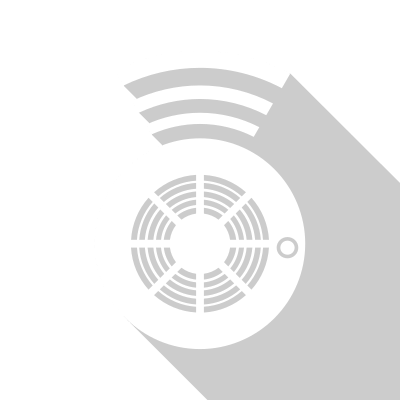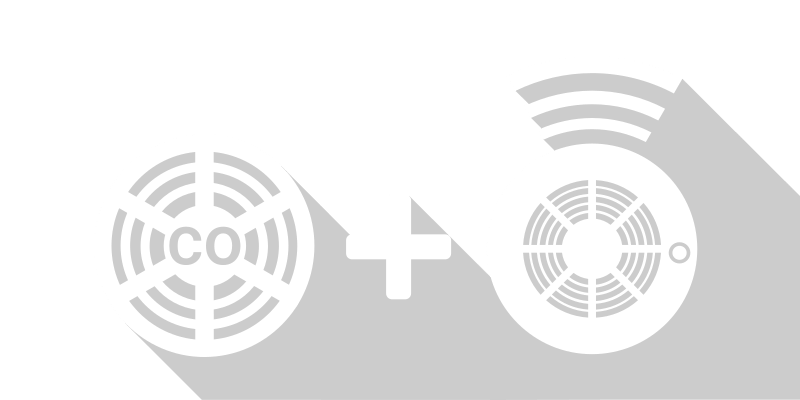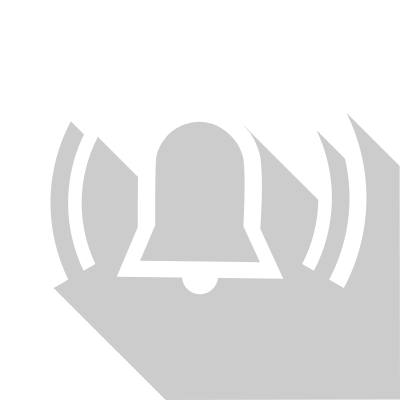
Safety Alarms
In addition to security alarms, lights and cameras, it is important not to forget about other alarms that can prove to be essential to protect your family and home.
It is likely that you may already have some or all of these installed in your home.
However, even if you do, you still need to make sure you maintain them properly to ensure full protection.
Installation & Maintenance
Regardless of what alarm you choose, you should always follow the user manual on all matters of installation and maintenance as there may be specific requirements for your particular alarms.
Smoke Alarms

Smoke alarms are vital for every home, each year they help save thousands of family's by giving an early warning alarm. And the great thing is that they can start from about £5 and are so easy to install that just about anyone can Do-It-Yourself.
Smoke alarms can be purchased from many outlets like Amazon, Argos, B&Q and even your local supermarket and pound store.
Having a working smoke alarm means that you are four times as likely to survive a house fire but despite this, it is estimated that 30% of the smoke alarms in the UK are inoperable due to missing, flat or disconnected batteries.
Types of Smoke Alarms
The general rules for what type of smoke/fire alarms you should use in each room are quite easy:
- Kitchen and Garage: Heat Alarms
- Landings: Ionisation smoke alarms or combined optical smoke and heat alarms
- Bedrooms, living rooms and hallway: Optical smoke alarms or combined optical smoke and heat alarms.
Ionisation Alarms
These are generally the cheapest and most popular alarms to purchase.
They are very sensitive to small particles of smoke produced by fast flaming fires, such as paper and wood, and will detect this type of fire before the smoke gets too thick.
Ionisation alarms are slightly less sensitive to slow burning and smouldering fires which give off larger quantities of smoke before flaming occurs.
Using these in a kitchen is normally not the best option as they can be too over-sensitive - resulting in an increase of false alarms like when you burn toast.
Optical Smoke
These are more expensive alarms but are more effective at detecting the larger particles of smoke produced by slow-burning fires, such as smouldering foam-filled upholstery and overheated PVC wiring.
If you have a fast flaming fire then these alarms are slightly less sensitive.
Optical alarms can be installed near (not in) kitchens, as they are less likely than ionisation alarms to go off when toast is burned.
Heat Alarms
These alarms detect the increase in temperature from a fire and are insensitive to smoke.
This means that they are the perfect alarm for installing in your kitchen where you would expect smoke to be a regular occurrence whilst cooking. They are also good for smokers who don't want to set off alarms in the lounge, or for rooms with open fires, or for a room that has a barbecue on a nearby patio.
Heat alarms only cover a relatively small area of a room, so if you have a large kitchen you may require more than one installed.
Combined Optical Smoke and Heat Alarms
Instead of having two separate devices, you could opt for a combination alarm which will reduce maintenance and the need for too many unsightly devices on your roof.
Having a combination of optical and heat alarms in one device should also reduce false alarms whilst increasing the speed of detection.
We would also advise that you always buy an alarm which has been certified to the British or European Standard.
Maintenance
You should always follow the user manual on all matters of installation and maintenance. It will only take a few minutes every year to ensure that you have optimum protection for your family.
Some manuals state that you should test your alarm every week or month or when the clocks are changed (twice a year). It is vitally important that you remember to maintain your alarms and it normally just involves pressing a button for a few seconds.
With the best of intentions, it is very easy for anyone to forget to check and clean their alarms.
If you have a computer or mobile phone then one of the easiest ways to not forget is to add a reminder to your calendar.
These can be automated to repeat on a regular basis so you just have to set it once and you are set for all the years to come.
If you are "old school" then simply writing in a diary or on wall calendar can accomplish the same outcome - but you will have to remember to manually add subsequent reminders.
You will also normally be required to vacuum it gently using the soft brush attachment to remove dust from the sensors.
And you will have to change the battery every year (unless it's a special ten-year alarm).
Alarms are not a buy once and forget product as they do wear out. Your alarm will probably state its replacement date either on the alarm itself or the box it came in. At this point in time you should replace the complete alarm with a new one - this is generally between 5-10 years (see manual).
How many do I need?
In a perfect world, you would have a smoke alarm in every room (except bathrooms). However, this is unpractical for most homes - not really due to additional cost but because of the increased maintenance and the perceived "ugly" look of devices on your roof.
It is generally accepted that you should have at least one on every floor of your property. You should make sure that you choose the type of alarm that is most suited to the risk in each room (see different types above).
Popular locations are to have them installed in your upstairs and downstairs hallway.
It is also vastly better if your alarms are inter-connected so that if one is triggered, the others in your home will also trigger.
e.g. A downstairs alarm is triggered at night whilst you are asleep upstairs - then your upstairs alarm will also go off giving you the best possible chance to hear the alarm that may just save your family's life.
What do I do if the alarm goes off?
In the event of a fire, get out of the house as quickly as possible by following your pre-determined escape plan, shut all the doors and call the fire brigade. Do not return to your home until the fire brigade says it is safe to do so.
For more detailed information on this and similar subjects please visit our what to do in an emergency page.
Hard of Hearing
For people who are hard of hearing or deaf, there are special alarm systems designed specifically for the deaf. When these alarms go off, a pad below your pillow vibrates (if you are asleep), and a strobe light flashes – alerting you or waking you up instantly.
Other safety equipment you may look into are Fire Extinguishers, Fire Blankets and Escape Ladders
CO Alarms

Carbon monoxide (CO) is a colourless, odourless, tasteless, poisonous gas produced by the incomplete burning of carbon-based fuels, including gas, oil, wood and coal. Carbon monoxide detectors are a lot like smoke detectors, but instead of looking for signs of fire, they detect levels of carbon monoxide.
Ideally, you'll want to install carbon monoxide detectors on every level of your home. It is also recommended that for all areas with carbon monoxide producing appliances, like your kitchen, livingroom and garage you should install a CO detector.
Most CO alarms typically last between 5 and 7 years after which you'll have to replace them completely (see manual).
Make sure that any work carried out in relation to gas appliances are done by a Gas Safe engineer and get appliances checked on a regular basis.
Battery-operated detectors are the most popular and easy to install but you will need to replace batteries on a regular basis (every year is a good time period).
You can buy hardwired detectors that use mains power - although it is still recommended that it also has a battery backup just in case of a power outage.
Some detectors can come with a digital screen so you can see the levels of carbon monoxide in your home. This generally adds cost to the alarms but can be a great way to see levels and give you reassurance on the safety of your home.
Another option is a smart detector. What these do is to run their own diagnostics to make sure they're working properly and sync with home automation apps so you can monitor your home from afar.
Maintenance
Just like with smoke/heat alarms you should always follow the user manual on all matters of installation and maintenance.
Combined Smoke/Heat & CO Alarms

If you require both smoke/heat and CO Alarms in one location then you can purchase a combined alarm instead of two separate units.
This can help reduce purchase costs, lower maintenance requirements and take up less of your living space.
SOS Alarms

SOS alarms are generally designed for the elderly or disabled to give them a simple and reliable way to get help.
They are alarms that can signal to a monitoring company or family member that emergency assistance is required.
e.g. Someone has fallen over or is in need of medical attention.
They can consist of small alarms that can be installed on a wall or ceiling and be triggered by pushing a button or pulling a cord.
Often additional portable buttons can be provided to have on a necklace/lanyard.
They can be a great peace-of-mind for those who might need them and for their family's. The additional security provided can mean that they can continue to have an independent life whilst having a backup lifeline.